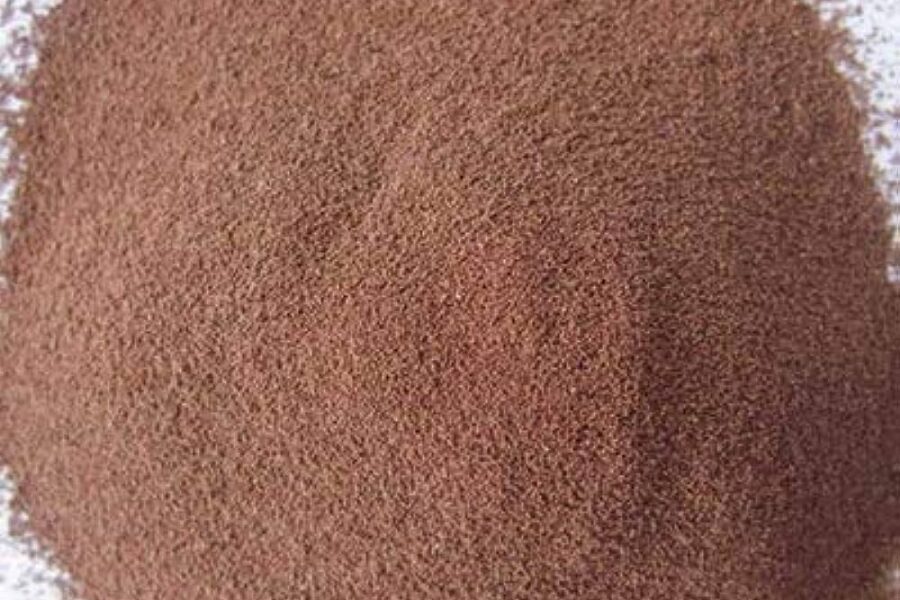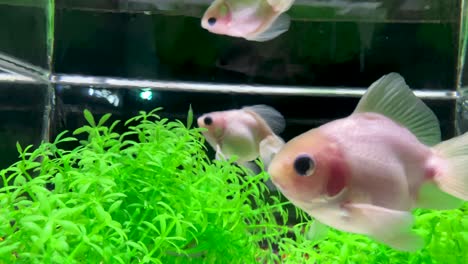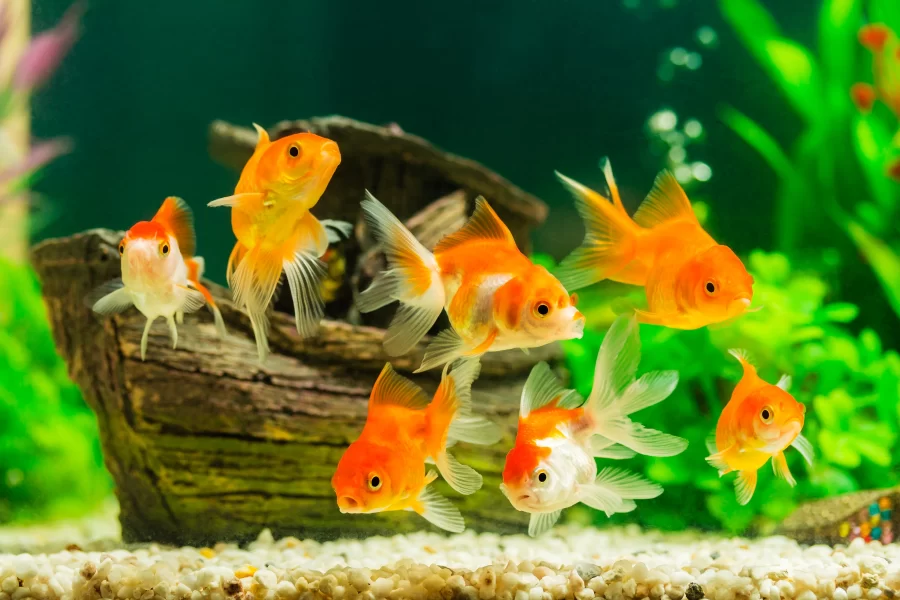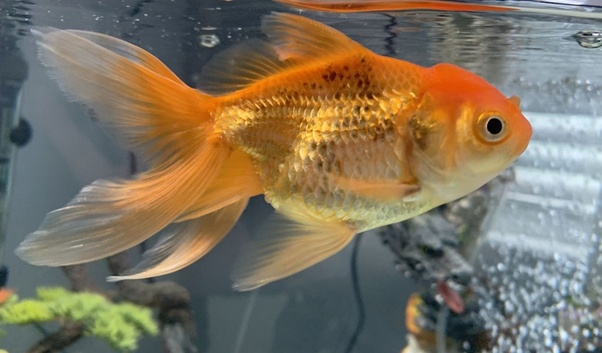
Ammonia Burns in Goldfish are a significant concern for pet owners that might not be well-known. These charming aquatic companions, known for their soothing effects and surprisingly good memory, are unfortunately prone to this painful condition. In this article, we will delve deep into the causes and early signs of ammonia burns, helping you recognize them and act quickly when they occur.
By the time you resurface from this educational dive, you’ll be equipped to not only treat affected goldfish, but also understand the potential long-term health consequences for your pet. With foolproof preventive measures and insights into potential complications, you’ll be ready to ensure that your aquarium remains a safe haven for your finned friends, free from the threat of recurring ammonia burns.
What Are Goldfish Ammonia Burns?

Welcome, fellow goldfish gurus and newbie keepers alike! Let’s kick off our fin-tastic journey together by understanding this issue. We promise, no big science-y words unless necessary.
Understanding the Condition
So, what in the deep blue sea is ammonia burning? To put it simply, it’s like a bad sunburn, but for fish. It happens when ammonia, a mean and frilly-finned part of fish poop, builds up in the tank. Picture your goldy swimming laps in its own lavatory. We hear you – eew! But what’s eew-er is this can hurt your fish’s gills, skin, and overall health.
Why Goldfish Are Susceptible
Now you wonder, why does my goldy get the short end of the stick? Here’s why – Goldfish are poop factories. Yes, you read that right. Our glinting friends eat a lot and well, output even more – making them more likely to suffer these pesky burns.
But hey, don’t be disheartened! Up next, we’ll tell you what signs to watch for to ensure your goldfish stays as happy as a clown…fish. See what we did there? Until then, keep those fins flapping!
Symptoms of Goldfish Ammonia Burns
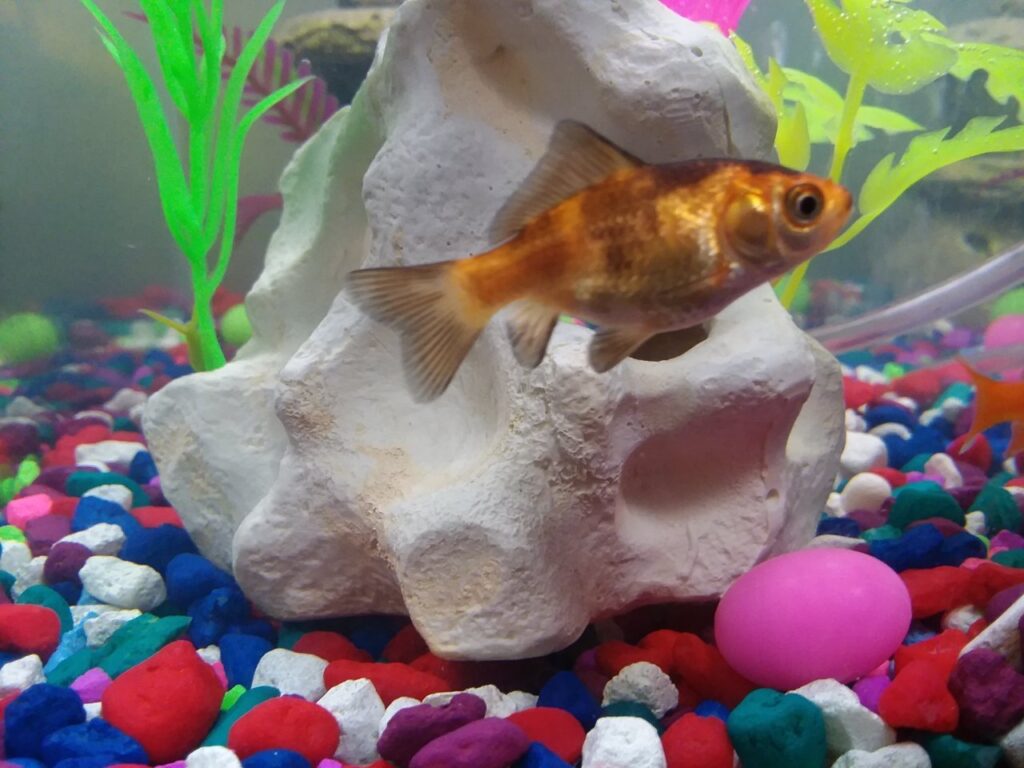
So your little aquatic buddies are not acting quite like themselves? Oh, dear! It’s possible they’re suffering from ammonia burn. Let’s swim into the nitty-gritty details of what to look out for.
Physical Signs to Look For
Ammonia burn in fish? Yes, it’s a thing, and it’s quite unpleasant. Picture having a sunburn, but under water. Not a good time, right? Similarly, your goldfish aren’t having a ball.
Physically, look out for unusual redness or inflammation on the gills, streaks of blood in the fins, or in extreme cases, the slimy skin peeling off. Don’t freak out, but dark, cloud-like patches could also appear, which is a prime sign of skin necrosis. Now, don’t go poking and prodding your fish mate! Gentle observation is key here.
Behavioural Changes in Your Goldfish
Keep a fishy eye on your finny friends’ behaviour too. Ammonia burn victims can become slow or lethargic, as if stuck in an aquatic traffic jam. In contrast, they might speed around the tank erratically, as if high on caffeine. Less eating (even their favorite TetraFin flakes), is another red flag. You might even notice your goldfish hanging out near the water’s surface more often, gasping for air.
Alright, we’ve spotlighted the physical and behavioral symptoms of ammonia burn in goldfish. Now, let’s dive deeper to uncover the root cause of this condition. After all, prevention is always the best cure. Prepare to hold your breath as we dive into the causes of ammonia burn in the next section.
Causes of Ammonia Burns in Goldfish

Experiencing an Ammonia Burn can turn any Goldfish’s day from “a swim in the park” to an “underwater nightmare.” Understanding the causes can prevent your scaly friend from experiencing this discomfort.
A Fish out of Water – Water Conditions Matter
Surprisingly, water conditions cause more Goldfish drama than an episode of “Real House-fishes of the Aquarium.” High ammonia levels due to inadequate water changes or cleaning can lead to Ammonia Burns. Heck, even your tap water might contain ammonia. It’s essential to test your water quality regularly. This way, you’ll ensure your Goldfish isn’t swimming in a pee-filled nightmare – talk about disgusting.
So Long, Salty Waters and Hello, Fresh Beginnings! Brace yourself, as we’ll dive into a topic that might seem a bit – fishy – the feeding habits of our Goldfish friends.
A Fishy Affair – Goldfish Feeding Habits
Stuffy and overfed Goldfish can produce more waste, leading to a creepy level of ammonia in the tank. Exhausting the food supply before it’s like a buffet also helps. So next time you feel the urge to play short-order cook, remember this – less is more, especially when it comes to feeding your Goldfish.
Speaking of Less is More So just how many Goldfish makes a crowd? Let’s swim on to our next topic and find out.
Not So Roomy After All – Overcrowding in the Tank
Ever heard of the phrase “the more, the merrier”? Well, not in this case. Too many Goldfish in the tank is bad news. Overcrowding can cause stress, unhealthy competition, and yes, you guessed it, elevated ammonia levels.
The next time you think of turning your tank into a Goldfish rave, stop. Remember, your Goldfish deserves some personal bubble space, not a never-ending house party with too many guests.
Overflow of Info? Take a Deep Breath… or Gulp! We’re about to change gear and delve into how to prevent this pesky problem from happening in the first place. A heads-up for our next adventure – Prevention of Goldfish Ammonia Burn. Are you ready?
Preventing Goldfish Ammonia Burns

Hang on to your fish nets pals! Let’s dive into some nifty methods for keeping your goldies safe from that nasty ammonia burn.
Regular Water Checks
The first rule of Fish Club is: always check your water. No, it’s not a secret fight club but it is rule numero uno. To ensure your tank isn’t mimicking a hazardous waste site, you must check the water quality regularly. Monitoring ammonia levels and doing weekly water changes will keep your fish happier than a clam at high tide. Sure, it’s a chore, but remember the mantra: “Clean water, happy fish.”
For a more in-depth look at keeping your aquarium in tip-top shape, take a look at our article, The Complete Guide to Aquarium Maintenance. It provides you with a comprehensive overview of how to maintain the water quality, clean the tank, and other essential aspects of keeping a healthy aquarium.
Now, let’s cast our nets towards the second preventative measure.
Proper Feeding Practices
Fish aren’t like your voracious pre-teen cousins; they don’t need to pile their plates. Goldfish have the propensity to overeat and the resulting waste can spiral ammonia levels out of control faster than a torpedo. Feed your fishies what they can chow down in 2 minutes, tops. And twice a day is plenty. It may sound like a sushi diet, but it’s just what the vet ordered.
For more information on avoiding overfeeding and keeping your goldfish at a healthy weight, check out our article on Strategies to Prevent Overfeeding Your Goldfish. There, you’ll find detailed tips and strategies to help keep your goldfish happy and healthy.
Get ready to make waves with our final preventative method.
Avoid Too Many Fishes in the Same Tank
It’s cozy in there, but not that cozy. Avoid treating your fish tank like an aquatic version of clown car stuffings. More goldfish equals more waste which, you guessed it, spikes ammonia levels. Plot twist: That’s a bad thing. One golden rule is one fish needs 20 gallons of water. Seems a lot, but remember – they’re not living in a crowded New York studio apartment, they’re made for the aquatic open road.
If you’re wondering how much space your goldfish truly needs, you can find all the information you need in our article The Right Tank Size for Your Goldfish. It provides helpful tips on choosing the right tank for your fish and creating an optimal environment. Additionally, for a more in-depth discussion on why adequate space is crucial for goldfish, take a look at How Much Tank Space Do Goldfish Need?, where you’ll learn about the importance of proper tank space for the health and happiness of your goldfish.
With these preventative measures, your goldfish’s risk of ammonia burn (and your subsequent frowny face) will be drastically lowered. Now, we move away from prevention and bait the hook for treatment. Let’s swim forward to learn how to help our finned friends if they do fall prey to an ammonia burn. Buckle up, aquarists, we’ve got some healing to explore.
Treating Goldfish Ammonia Burns
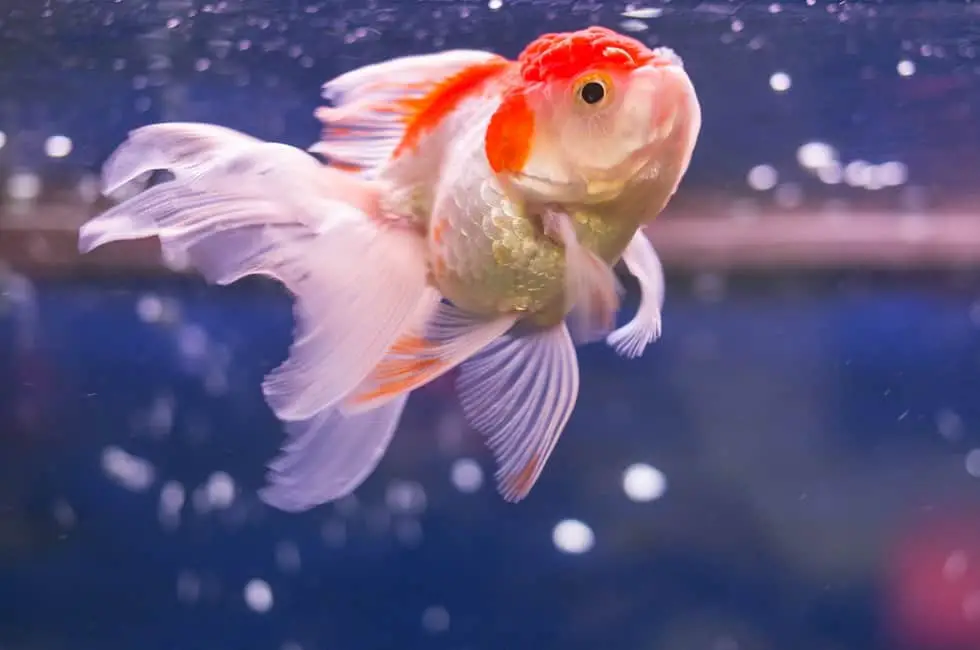
Toot-toot! Full steam ahead! Hold on to your snorkels as we dive into the blue sea of goldfish care. We’re about to see how to treat a goldfish suffering from ammonia burn. Sound scary? Breathe easy. Just like us, fish might need a bit of TLC too. Oh, and perhaps a teeny-weeny bit of science.
Immediate Steps to Take
Rad alert! You’ve spotted signs of ammonia burns on your goldfish – panic button pushed. Well, unpush it. The first step is to secure their environment. Check the water quality pronto. Look out for pH level, temperature, and of course, ammonia level. Does any of this sound ‘fishy’? You might need to swap out some of the water. But remember, not all of it at once. You don’t want to stress your finned friend.
Long Term Care
So, you’ve dealt with the immediate danger. Well done, champ! Winning battle one doesn’t mean war over, though. Long-term care’s up next. This involves regular water checks and not overfeeding your fish. Remember, a bloated goldfish is not a happy goldfish. Keep the water clean, food minimal and your goldfish merry.
When to Consult a Vet
“Hoot, hoot, I have a fish vet on speed dial!” Said no one ever. But trust me, you should. If your fish doesn’t bounce back after your initial care or if symptoms worsen, don’t call Ghostbusters! Call a fish vet. They are the real heroes when things go south.
Next, let’s cruise down to Goldfish Health Avenue. We’re about to delve into the impacts of ammonia burns on our fishy friends. Get ready to soak up more of that good ol’ fish knowledge. Remember, knowledge is power. Or in this case, a happier, healthier goldfish!
Understanding the Impact of Ammonia Burns on Goldfish Health
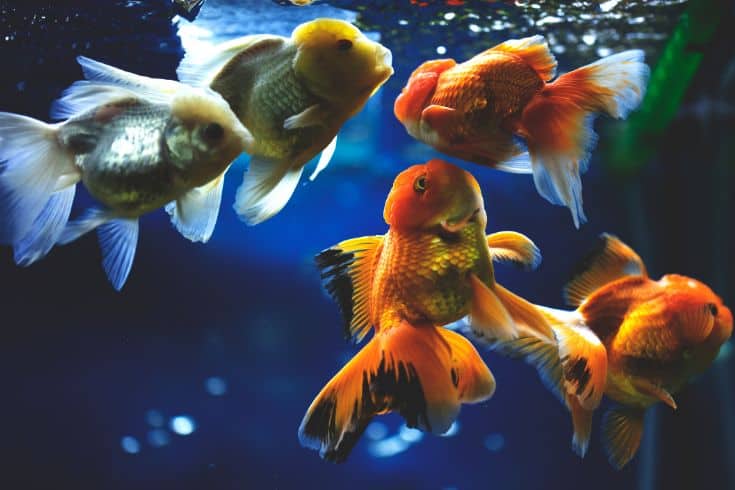
Let’s do a deep dive now, fishy friends. Why? We need to understand the impact of ammonia burn on our finned pals’ health.
Possible Health Complications
Ammonia burns aren’t a bad day at the coral reef. They can cause serious health issues. You might see breathing issues, due to damaged gills. You could also see cloudy eyes, or worse, vision loss. Poor Goldie might even get frequent infections because burns can weaken the immune system.
Let’s paddle to a brighter side now. Time to discuss the recovery process.
Recovery Process
Swim with hope, friends! Goldfish are resilient critters. With proper care, they can bounce back from ammonia burns.
The healing process involves great water conditions and a nutritious diet. Don’t forget plenty of love too. Allow your fish time to heal. It won’t happen overnight.
Nobody wants to see their goldfish go through this again, right? So, on to preventing recurrence!
Preventing Recurrence
Move over Hitchcock, we’ve got a thriller in our tank. If not handled, ammonia burns can make sequels. To prevent that, maintain good water quality.
Regular testing for ammonia levels is crucial here. Also, ensure to not overfeed your fish. Crowding the tank? That’s a big no-no! Keep a check on the population. Also, add some plants, it might help to control the ammonia in the tank.
You are a guardian of your goldfish. Your actions play a major role in their health. Batman has Gotham. Superman, Metropolis. You? You’ve got a tank full of goldfish to protect. Practice these tried and tested measures to keep ammonia burn at bay.
Final Thought
As we wrap up our deep dive into goldfish ammonia burns, it’s clear that these can be incredibly harmful. The burning signs, both physical and behavioral, are noticeable, with causes linked to water conditions, feeding habits, and overcrowding. Preventive measures like regular water checks, proper feeding, and avoiding an overpopulated tank are essential.
When faced with an affected goldfish, immediate action needs to be taken, with a focus on long-term care and veterinary involvement when necessary. The impact on the fish’s health can be profound, possibly leading to complications. It’s important to understand the recovery process and how to prevent a recurrence. A clean tank and a well-cared-for goldfish are, indeed, a joy forever.
Frequently Asked Questions (FAQ)
Question: What are Goldfish Ammonia Burns?
Answer: Goldfish Ammonia Burns are health conditions suffered by goldfish due to overexposure to ammonia in the water, which can result in damage to their gills and skin.
Question: Why are Goldfish susceptible to Ammonia Burns?
Answer: They’re more susceptible because their tanks, if not properly maintained, can accumulate high amounts of ammonia resulting from their waste, excess feed, and decayed plant matter.
Question: What are the symptoms of Ammonia Burns in Goldfish?
Answer: Symptoms can include red inflamed gills, loss of appetite, lethargy, and abnormalities in swimming, among other behavioral changes.
Question: How can I prevent Goldfish Ammonia Burns?
Answer: Regular water checks, proper feeding practices, and avoiding overstocking your fish tank can go a long way in preventing this condition.
Question: What do I do if my goldfish suffers from Ammonia Burns?
Answer: Immediate steps include changing the water, reducing feeding, and considering medicinal intervention. For severe burns, a vet consultation may be necessary.
Question: What is the impact of Ammonia Burns on goldfish health?
Answer: If left unchecked, Ammonia Burn can lead to severe health complications, including infection, disease, and even death. Recovery is possible but requires consistent care and monitoring to prevent recurrence.

